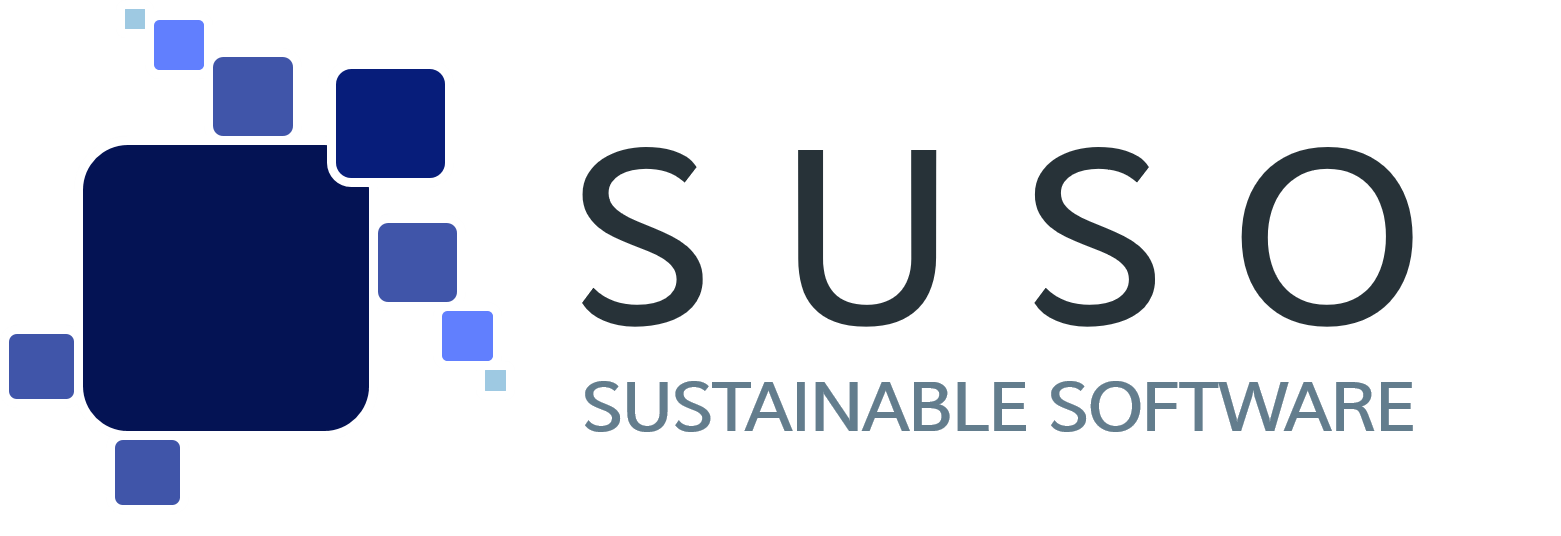Blog: Sustainable Software Development
An overview of the Corporate Sustainability Reporting Directive (CSRD) – What (IT and software) companies need to […]
The potential of gamification to promote sustainable behaviour is immense. By integrating game elements into software applications, users can be motivated to make environmentally friendly decisions, save energy, act socially responsible or use sustainable products.
Although data analytics is a valuable tool for companies to improve their performance and provide better services to their customers, it also poses a significant environmental problem. Data analytics requires enormous amounts of computing power, which is provided in data centers and cloud infrastructures.
Circular IT: How can we apply the concept of circular economy in the IT industry and reduce […]
A sustainable software architecture primarily takes energy efficiency into account. It focuses on the ecological impact of software development and ensures that the software contributes as little as possible to CO2 emissions.
Sustainability as a gamechanger: How the gaming industry is shaping its future The gaming industry has become […]
How Artificial Intelligence (AI) will change the profession of software developers The progressive development of artificial intelligence […]
Whether it's protecting privacy, promoting open source software, designing sustainable systems, or using the Internet as a tool to promote social change, they've all helped make software development look different today than it did just a few years ago.
Coffee is the fuel in the software industry. Many software companies drink a lot of coffee - often even in disposable cups that are discarded after only a short use. But while we're worrying about the next update, improving the code or developing new features, we often forget that our coffee machines can also have an impact on the environment.
The development of artificial intelligence (AI) is an important part of the digital transformation in all areas of business and society. However, the proliferation of AI technologies also raises ethical issues that are of great importance for sustainability. Ethics refers to moral principles and values that guide human behavior.
The IT industry has an important role to play in addressing the climate crisis and should consider the importance of sustainability in its decisions. The use of cloud solutions can help reduce energy consumption and CO2 emissions, especially through the use of renewable energy.
Smart cities are cities that use technology to improve their infrastructure, services and quality of life. They do this using a variety of technologies such as the Internet of Things (IoT), Big Data, Cloud Computing and Artificial Intelligence (AI). This to collect and analyze information that can then be used to optimize city functions.
Virtual and augmented reality have experienced an enormous upswing in recent years and are finding more and more areas of application in various industries. They make it possible to integrate digital information and virtual worlds into the real world, thereby creating new opportunities.
Sustainability and circular economy are becoming increasingly important. Blockchain technology offers a promising potential solution here, as it enables transparency, efficiency and traceability.
IoT (Internet of Things) can not only help reduce energy consumption, but also make processes more efficient and thus save resources.
In this article, we present 21 such best practices. They can be applied by software practitioners and software companies to promote sustainable software development. From code optimization to the use of sustainable technologies, we will present different approaches to improve sustainability in software development.
From reducing CO2 emissions through green coding to designing accessible websites and different pricing models for different user groups, there are numerous approaches to acting more sustainably. But what are the advantages of sustainable software development? Why should software companies commit to sustainability?
Participatory software development has the potential to promote sustainability in social, environmental and economic aspects by taking into account the needs and concerns of different interest groups (stakeholders) and developing joint solutions to complex challenges.
Accessible web design is not only an ethical imperative, but also a legal requirement in many countries. A website that is accessible to people with disabilities also offers benefits to all users, as it is more user-friendly, easier to understand and better structured.
By applying green coding, software companies can not only contribute to environmental protection, but also reduce their energy costs and strengthen their reputation as an environmentally conscious organization. In the following sections, we will present five examples of Green Coding and use code examples to illustrate how sustainability and efficiency can be combined in software development.
Open Source is a term used to describe software that is freely available to use, modify, and distribute. This type of software development is collaborative and transparent, allowing developers from around the world to work together on a project. Open Source is a crucial component of sustainable software development, promoting collaboration, transparency, innovation, and efficiency.
Awareness of the environmental impact of cloud computing is growing, and more and more companies are adopting sustainable cloud solutions. The future of sustainable cloud computing looks promising as more advances are made in technologies and practices to maximize energy efficiency and minimize carbon footprints.
Agile software development is a methodology that aims to increase flexibility and adaptability in software development. Unlike the traditional waterfall method, where each step of the development is completed one by one, agile software development uses iterative processes to achieve faster and more effective results.
Software companies have an important impact on the manufacturing and lifecycle of electrical equipment. They can help reduce the amount of e-waste by being environmentally conscious and adapting their business practices. Here are some steps software companies can take.
Sustainable businesses lead to cost savings, higher customer satisfaction, and competitive advantage. At the end of the day, it's a win-win situation. This is reinforced by the fact that more and more public funding in the area of sustainability is made available to (software) companies.
Sustainability is increasingly becoming an important issue for software companies. Sustainable marketing not only offers the opportunity to communicate the company's environmental and social responsibility. It is also an worthy instrument to win the trust and loyalty of customers.
A study by the "Centre for Energy-Efficient Telecommunications" (CEET) and the "Swedish KTH Royal Institute of Technology" estimates that information and communications technology (ICT) already accounts for around 10% of energy consumption worldwide. This figure will continue to increase in the future as more and more AI systems are deployed.
It is estimated that the IT industry is responsible for around 2% of global CO2 emissions - roughly equivalent to air traffic emissions. The power requirements of the IT industry have increased exponentially in recent years as more and more devices and applications are put into operation. The trend toward cloud computing and data centers has also contributed to a significant increase in energy consumption.
The familiar concepts of Usability (UI) and User Experience (UX) focus on designing digital products and services in such a way that they are easy and intuitive to use while offering users a positive experience. This is primarily about improving and optimizing design and interaction features. Inclusive UX goes beyond this and aims to design digital products in such a way that they are accessible and usable for all users, regardless of their individual skills, cultural backgrounds or technological knowledge.
The term "sustainability" originates from forestry and was first coined by Hans Carl von Carlowitz in the 18th century. Carlowitz was a Saxon forestry official and aimed to design forest use in such a way that it would be possible in the long term. He recognized that uncontrolled logging of the forest would lead to the destruction of the forest ecosystem and thus affect the timber industry.































